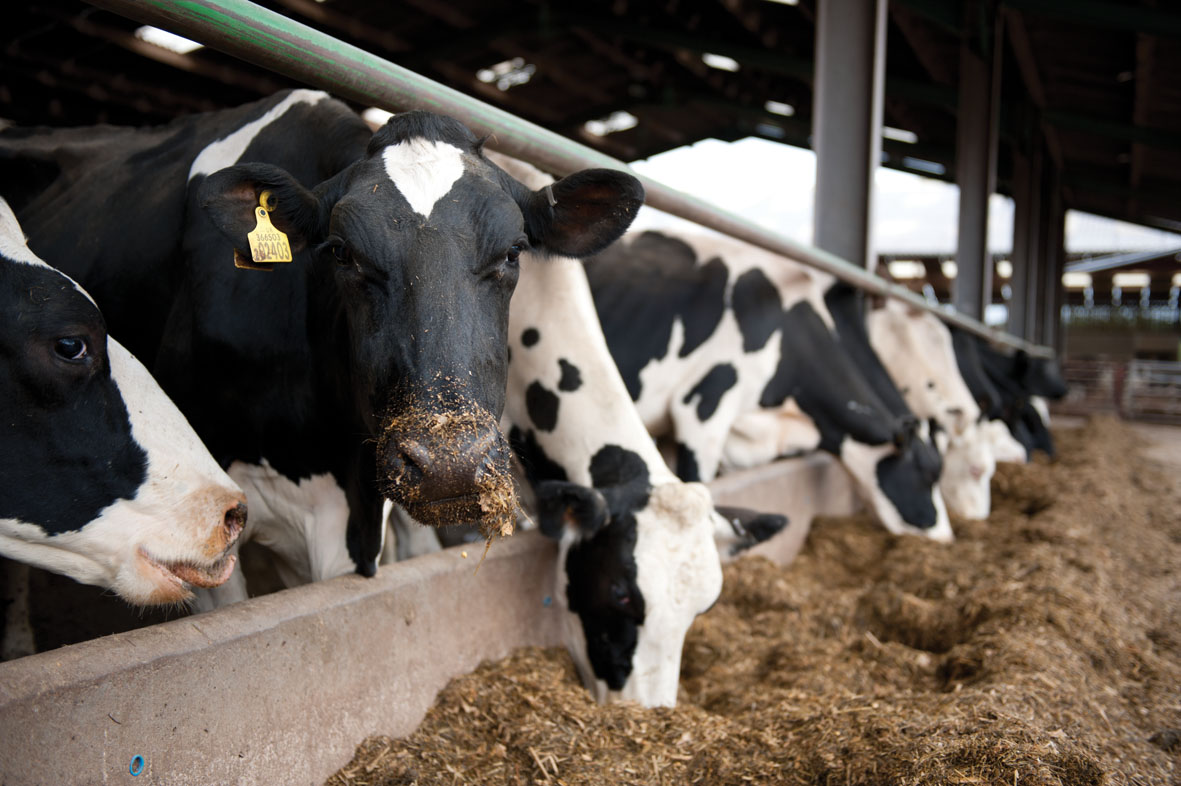The rumen microbiome plays a vital role in global food security
Ruminants are a vital asset to our society through their ability to convert non-human digestible fibre and protein into nutrient dense meat and milk to feed the global population. It is acknowledged that “the rumen microbiome is estimated to be responsible for digesting around ten thousand million tonnes of cellulosic material worldwide to provide milk and meat for 7.6 billion people”1.
Cattle on average produce 1kg of human edible protein from every 600g edible protein they consume, which in turn is of a higher nutrient content and can also contribute to the circular bioeconomy by utilising waste from non-animal agriculture (such as byproducts from plant based food production. This makes them vital to our future food security as the global population grows, however, it also comes at a cost.
The FAO urges for efficiency
The cattle industry (beef and dairy) has been highlighted as the largest source of agriculture’s Co2 emissions (65%) globally, with feed production and processing (45%) and enteric fermentation (39%) as leading contributors. The remaining emissions attributed to cattle come from manure storage, processing, and transportation. The Food and Agriculture Organisation of the United Nations (FAO) has stated2 there is a significant link between greenhouse gas emissions per kilogram of meat and milk, and the efficiency of production.
To make the biggest impact on emissions therefore, we need to look at efficiencies in both enteric fermentation and feed production and utilisation.
Feed efficiency has a significant impact on emissions intensities
Feed efficiency can support both a reduction in emissions from feed production and enteric fermentation. The concept is simple – if feed is digested more efficiently, less of it is needed, and animals can reach production or growth targets more easily. This allows us to produce more meat and milk using fewer inputs, reducing natural resource use, greenhouse gas emissions and nutrient use in the form of Nitrogen and Phosphorus, important for both air and water quality.
With feed and forage representing the largest costs on livestock farms, feed efficiency also has the potential to lower the cost of production significantly.
If feed efficiency has a significant impact on emissions, it’s the rumen microbiome which has the biggest impact on feed efficiency – more than 50% of a cow’s feed efficiency is governed by microbial community in her rumen. Thanks to recent research, we can now identify those groups of microbes associated with more efficient animals, and we can encourage their growth throughout the lactation cycle.
It can therefore pay to always consider the impact of diet and changes in diet on the microbes in your cow’s rumen and not just focus on nutrient content. We can therefore add microbiologist to the many skills a farmer needs to do their job!
How do we harness the ‘right’ microbes in the rumen?
Actisaf® Sc47 live yeast supports growth of specific species of rumen microbes that are highly correlated with fibre digestion, acid utilisation and ultimately feed efficiency. These microbes extract more nutrients from the diet and buffer the rumen by converting lactic acid into propionic acid – a vital source of glucose in the rumen which is often wasted.
Through encouraging these beneficial microbes to thrive, Actisaf® is proven to process lactic acid more effectively than sodium bicarbonate which simply neutralises lactic acid and does not facilitate the conversion to propionate which means you miss out on a valuable glucose source. This better conversion of lactic acid also means the risk of acidosis or sick stomachs in herds is significantly reduced – which means less risk of drops in yield.
Actisaf® Sc47 also allows the rumen microbiome to adapt more readily to changes in diet by creating an environment that allows microbes to adapt to changes in feed, such as turning out to grass, changes in silages etc. which often upsets the microbiome and causes setbacks in performance.
A 2020 study from the University of Nottingham found that supplementing Actisaf® in a high performing herd in the first four months of lactation increased feed efficiency by 5.5%. This was achieved primarily through increased digestion of fibre in the rumen, which yielded an extra 5.9% (or 2.8kg) of energy corrected milk with no change in feed intakes or body condition loss – providing an 8:1 return on the cost of Actisaf®.
Effectively, the cows reached higher peak yield, which translated to up to 580L of extra milk per 305-day lactation - lowering cost of production by more than 1 ppl. For a farm supplying one million litres a year, this equates to £10,000 per year.
A more efficient and profitable industry is a more sustainable one. If we harness the power of the ruminant digestive tract, we can minimise farming’s impact on the natural environment and improve resource use efficiency.
1. Delgato et al., 2019
2. FAO, Tackling climate change through livestock: A global assessment of emissions and mitigation opportunities

